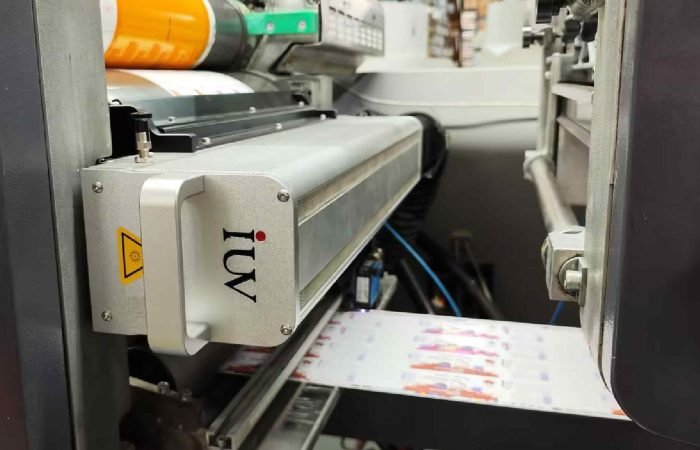White and opaque UV inks are notorious troublemakers in label, flexo, offset, and narrow-web printing. Their high pigment density and light-scattering properties create unique curing headaches—uneven adhesion, incomplete polymerization, and energy inefficiency. Let’s break down the roadblocks and explore how LED UV curing systems are rewriting the rules.
Why White/Opaque UV Inks Fight Back
These inks pack titanium dioxide or other opacifiers to achieve their signature coverage. But that same density:
- Reflects/absorbs UV light before it penetrates the ink film.
- Requires higher energy doses for full curing.
- Risks substrate warping with excessive heat from traditional mercury lamps.
In flexo and narrow-web printing, where thin films and heat-sensitive materials (like PE films or shrink sleeves) dominate, the margin for error shrinks further.
LED UV: The Game-Changer for Problematic Inks
Modern LED UV systems operate at 365-395 nm wavelengths—a sweet spot for initiating photoinitiators in white/opaque formulations. Here’s where they outshine conventional tech:
- Precision Irradiation
- Narrow spectral output avoids wasted energy on non-reactive wavelengths.
- Enables customized formulations with photoinitiators tuned to LED peaks.
- Cold Cure Advantage
- No IR radiation = no heat damage to thin films or temperature-sensitive substrates.
- Eliminates warping in PET labels or crinkling in unsupported vinyl.
- Instant On/Off Control
- Pulsing capabilities allow dose adjustment for thick ink deposits.
- Reduces oxygen inhibition issues at the surface layer.
Application-Specific Fixes Across Print Methods
Label Printing
- Problem: White underprints curing poorly before color layers.
- Fix: High-intensity LED arrays (≥12 W/cm²) with dual-side curing for opaque metallized films.
Flexo Printing
- Problem: Plate bounce causing inconsistent ink transfer.
- Fix: Pair LED curing with low-viscosity UV flexo inks to maintain dot integrity.
Offset Printing
- Problem: Chalking on coated stocks.
- Fix: Hybrid UV/HUV systems with LED final cure for surface hardening.
Narrow-Web
- Problem: Curing thick white inks on fast-moving webs.
- Fix: Multi-lamp LED arrays with focused beam collimation.
Optimizing Formulations for LED Compatibility
Forward-thinking ink makers now prioritize:
- Photoinitiators with peak absorption at 385 nm (e.g., TPO-L derivatives).
- Reactive diluents that reduce oxygen inhibition.
- Precisely milled TiO₂ particles (0.2–0.3 µm) for optimal light penetration.
A recent study showed LED-cured white UV inks achieve 93% crosslinking density vs. 78% with mercury lamps—critical for chemical-resistant packaging.
The Energy Math
Switching to LED UV cuts energy costs by 60-70% for white ink curing. Example:
- Mercury system: 240 W/cm for 8-color press.
- LED equivalent: 80 W/cm with 30% faster line speeds.
But lamp lifetime matters—look for LEDs rated ≥20,000 hours at full output.
Troubleshooting Checklist
If cured white inks still underperform:
- Test irradiance with a radiometer—are you hitting ≥8 W/cm²?
- Check photoinitiator load—should be 6-9% for opaque formulations.
- Verify nitrogen inerting (if used)—O₂












